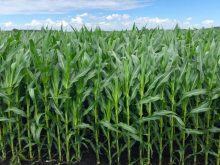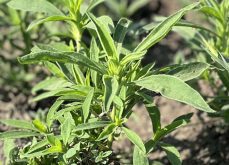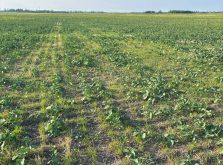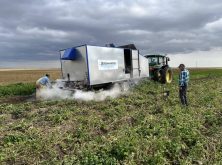Although it has only been on most farmers’ radars for the last couple of decades, no-till production has become a modern-day success story, with well over half of Canadian farmland now being farmed under its practices.
However, no till relies heavily on herbicides to manage weeds and retain soil moisture. And with key herbicides like glyphosate hard to nail down this year and expensive when available, that’s a problem — one complicated by pockets of low soil moisture throughout the Prairies.

Warren Ward, a Saskatchewan-based agronomist with the Canola Council of Canada, suggests producers outline a range of “what-if” scenarios to help guide them through rough patches in the growing season, including herbicide shortages.
“We’re in the wintertime and that’s the time when hopefully plans are being finalized, if they aren’t already,” says Ward. “Part of that is just having a couple of good options — ‘If this happens, we’ll do this, and if that happens, we’ll do that.’”
What can producers do when herbicide supplies are limited and soil is dry? Ward and Jeremy Boychyn, agronomy research extension specialist with Alberta Wheat and Barley Commission, have some tips.
Seed, scout and control early
Read Also
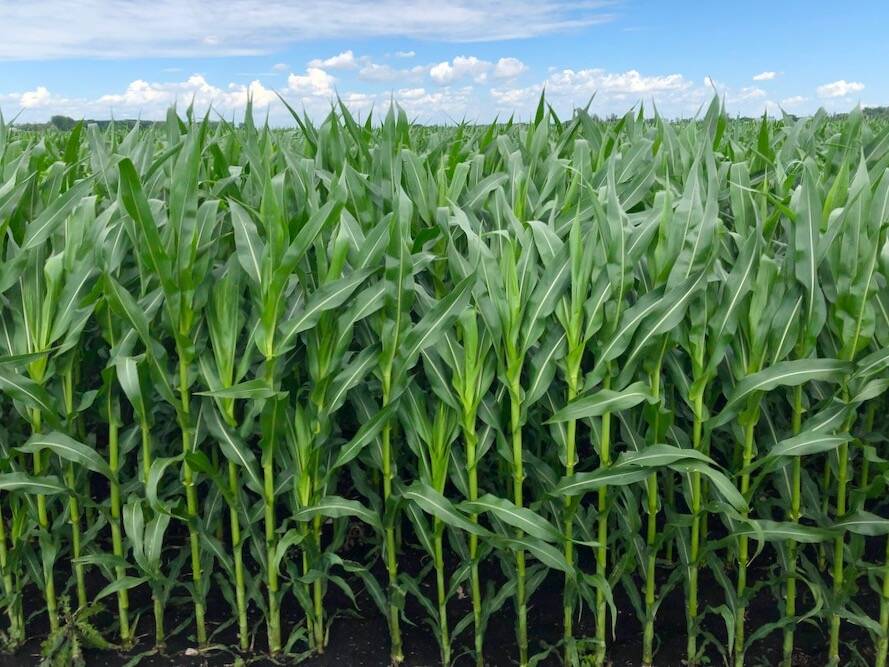
Cancer agency reclassifies another herbicide ‘probably carcinogenic’
The WHO’s cancer research agency has now put atrazine, a herbicide well known to corn growers, in the same potential-hazard category where the agency put glyphosate.
Seeding early to get maximum benefit from snowmelt or early-season moisture is key, says Boychyn. “In general, if we can get the crop seeded earlier, we typically see yield advantages from that.”
Of course, seeding early can mean different things to different growers depending on crop, conditions and location. “Every year can be a little bit different when it comes to finding that sweet spot when we should be seeding. In southern Alberta versus northeastern Saskatchewan, there is definitely going to be some timing differences on the optimal date to get seeding in,” says Ward.
Seeding too early can come with its own risks, he adds. “Occasionally earlier seeding puts crops at risk of flea beetle damage. We want to walk that fine line of taking advantage of that early-season moisture while not putting ourselves at added risk of slow-growing crops that are more susceptible to insect damage and late-season frost.”
Soil temperature may be a tool on that front — at least in wheat. Boychyn says there has been research linking seeding at two to six degrees Celsius soil temperature with yield benefits and stability in that crop.
Early weed control is an important tool for getting the most from limited herbicide supplies, says Ward. “Early control is always better than controlling later on when weeds are bigger, and it may take a higher rate of product to actually kill the weeds.”
Scouting is a crucial practice for targeting weed species and determining the timing of herbicide applications, says Ward. “It’s important for getting timing right and knowing what weeds are there because the weed species will impact the rates needed to control them.”
Use tank mixes
Tank mixing with appropriate herbicide partners can also be used to extend glyphosate and other products hit hard by high prices and shortages, says Boychyn.
“There are a decent amount of tank-mix options out there. If you’re looking at mitigating the cost of glyphosate, tank mixing at appropriate rates will hopefully put you in a better position for controlling those weeds and not losing that moisture,” he says.
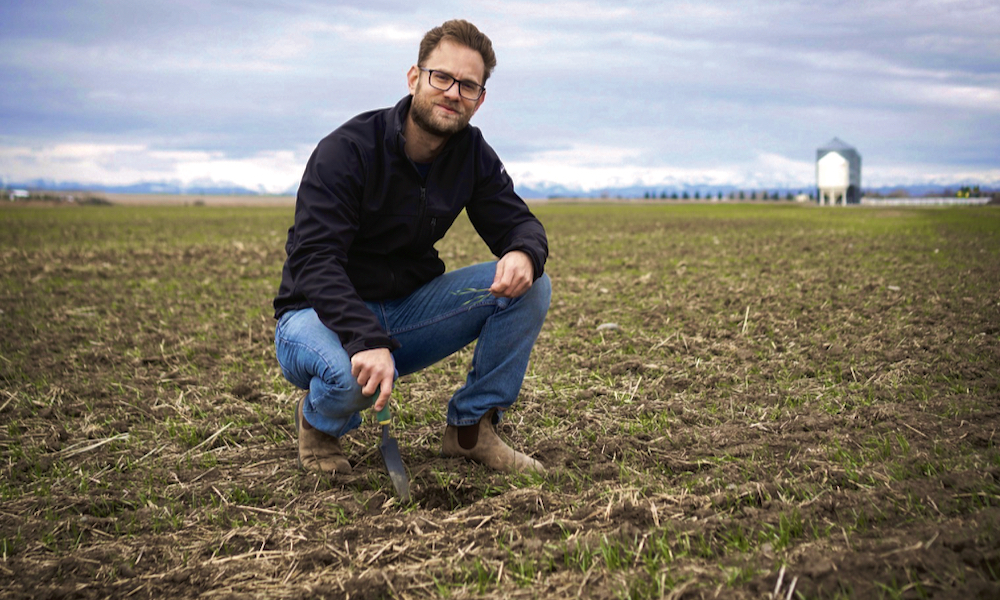
Generally, lists of tank-mix partners can be found right on the label of the crop protection product in question. Provincial crop protection guides are also excellent resources. Local agronomists can be a wealth of information as well, and may be able to help develop an application and tank-mixing plan.
“Hopefully, producers have been collecting information about weed profiles in each of their fields so they can make sure the tank mix they’re spending money on is targeting the problem weed,” says Boychyn.
“That’s going to be the way to make sure the money spent on these tank mixes is being used appropriately.”
Skip pre-seed burnoff? That depends
Another option to help producers stretch thin herbicide supplies is skipping the pre-seed burnoff. It does, after all, eliminate a herbicide pass.
“In recent years, with it being so dry, a lot of growers have not done their pre-seed burnoff like they would normally plan on doing. The reason for that is with the dryness and sometimes the cold springs, it just doesn’t seem like a flush of weeds is coming that needs that control in the spring before seeding,” says Ward.
However, growers should keep in mind that skipping pre-seeding weed control makes the first in-crop herbicide pass even more important. “We need to get control of those early weeds and eliminate that crop competition,” he adds.
This again highlights the role of scouting when planning to seed and spray. “The risk is, there may be some weeds already growing that — if you’re not scouting carefully — you might miss and that means they might emerge before the crop and be a much stronger competitor for resources,” says Ward.
Is spot-spraying worth the investment?
It may be a costly option upfront, but Ward says producers concerned about herbicide availability in the short and long terms may want to look at a sprayer outfitted with spot-spraying sensors.
Leading crop spraying advisor Tom Wolf says “green-on-brown” precision spot spraying that specifically targets weeds is already here. However, the usefulness of the technology is largely limited to pre-seed burnoff and post-harvest spray applications. And “green-on-green” in-crop targeting is not here yet but on the horizon.
Investing in spot-spraying tech is a discussion to be had between you, your retailer and possibly your financial advisor, but it is an option, says Ward. “Especially under higher herbicide prices, acquiring that technology may become more attractive, even if there’s an extra cost to do so.”
Thinking about tillage? Proceed with caution
If you’re usually a zero- or minimum-till producer, should you add some conventional tillage practices this year to manage weeds? Only if you’ve exhausted all other scenarios, say the agronomists.
Tillage can compromise the soil’s ability to retain moisture at whatever point it does rain, says Boychyn.
“I think the bottom line is tillage as a weed control option can be scariest when moisture and rainfall is already low — it should really be a last-resort option. All other opportunities for weed control should be entertained before moving to tillage because there are challenges that come with it in terms of moisture loss, soil loss, soil structure loss and soil health.”
It can also trade one bad weed situation for another, says Ward. Fields farmed under no till often have dormant weed species underneath the surface, and tillage can disturb them and cause them to germinate.
“We will have short-term weed control (with tillage) but in the long term we might actually introduce a weed population in those fields,” he says.
Where does tillage fit in?
Where does tillage fit into all of this? Depending on the situation, both agronomists agree there’s still some place for tillage on the farm.
The switch to no till hasn’t been universal — even farmers who rely heavily on those practices have been known to still use tillage to smooth ruts, manage heavy crop residue and break up compacted soil.
Ward points to post-broadcasting cultivation as a practice that can both incorporate fertilizer and achieve weed control when herbicide supplies are tight. Timing is an important consideration, however.
“Ultimately, what we want to have happen following tillage is to build that soil up again to start limiting moisture loss. In my mind, the longer that it has been disturbed before seeding, the greater chance of moisture loss from that soil. Tillage should take place as soon as possible before seeding — not necessarily the day before but as close as possible.”
Tillage can also play a role in managing nutrients in cases of stratification, says Ward. Nutrients like phosphorus, which has limited soil mobility, can get stuck in the upper couple inches of the soil under no-till systems. “Mixing” the soil by tilling can make these nutrients more available to the plant.
“From a nutrient management standpoint, it’s not necessarily a terrible thing, but then we also have to think about what the negatives are. Any time we’re opening that soil up, we’re losing soil moisture and increasing that evaporation rate. That’s a problem I think most people are well aware of.”




